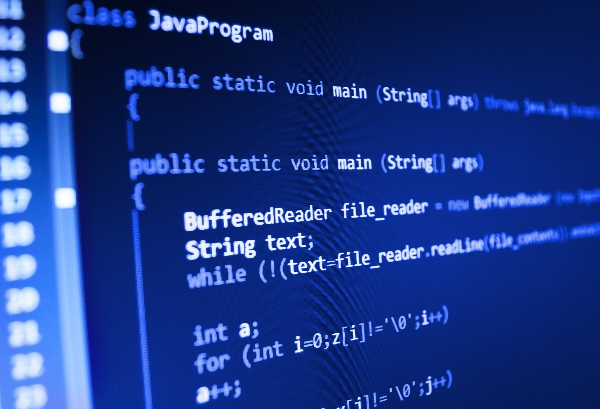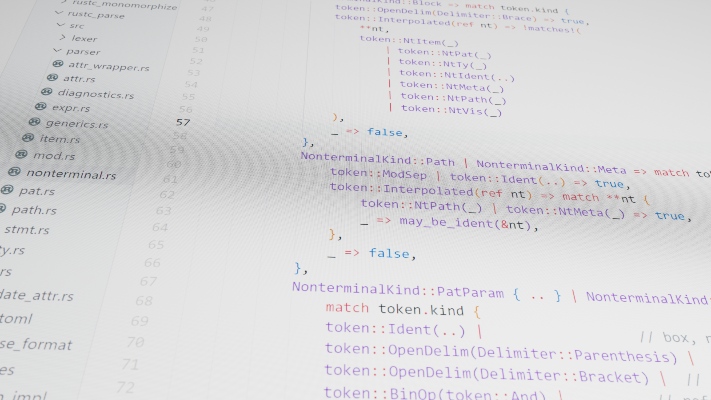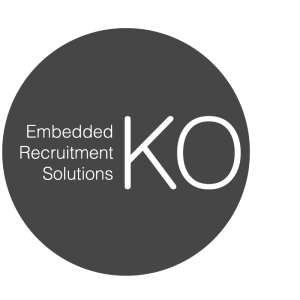If you asked a group of software developers which language is used for embedded systems, the majority of them might say C or C++. But you’d also get answers ranging from the popular Java programming language to the specialised Ada, as well as specific embedded languages like MicroPython.
There’s no single answer to what programming language is used for embedded systems because a range of different languages are suitable for designing and developing embedded software. If you’re a software engineer working with embedded systems you might have a favourite option, or you might be curious about other compatible programming languages and the types of projects they’re best suited for.
In this article, we discuss eight of the most popular embedded systems programming languages and share their key features, uses and how to choose between them.
What is Embedded Software?
Embedded software is any type of software that is built into a specific device. It has fixed hardware requirements, which means that it cannot be installed on different computer systems and instead is designed for a particular type of device.
The hardware components that run embedded software on a device are known as the embedded system. Embedded software is developed to run on the specific hardware in a device, which means that it is created from scratch to suit the unique device every time.
The specialised nature of embedded software means that developers need to have a comprehensive understanding of programming and device hardware. Whilst popular coding languages can be used for embedded programming, the approach needed for this kind of software is niche, which makes embedded software engineers an in-demand role.
What Is the Best Programming Language for Embedded Systems?
There are a range of different options when it comes to deciding which programming language is best for embedded systems. Some options are popular coding languages compatible with embedded devices, whilst others have been specifically designed to suit embedded software engineering and are more niche in the industry.
When you’re choosing the best language for programming embedded systems, you should consider factors such as:
- Whether the tasks the software is completing are low-level or high-level
- The memory of the embedded device and the size of the program it will be able to run
- Any hardware constraints that might make a particular language unsuitable
- Whether the program needs to be portable and suitable for other processors
- The level of security the code needs to have
- Your familiarity with other coding languages and the learning curve required to get to grips with something new.
Here are eight of the most popular programming languages for embedded systems and some of the key features of each.
C++
One of the most popular programming languages for embedded systems is C++, which was designed as an extension of the C programming language in the 1980s. It’s an object-oriented coding language with a lot of different capabilities that build on its predecessor, including inheritance and polymorphism which help to improve the development process by allowing you to reuse code.
A feature that makes C++ so good for embedded software development is that it’s a low-level programming language, allowing control over elements of hardware resources. Another benefit is that it’s also mainly compatible with code written in C, allowing for existing software to be reused and adapted without starting from scratch.
C++ is known for being a flexible language which makes it suitable for a range of different embedded software projects. It’s often chosen for IoT projects and applications that can be used on a range of different devices, thanks to its portability.

Python
One of the most common programming languages used by developers across engineering sectors is Python. Developed in the 1990s and known for being an accessible programming language for all abilities, its simple syntax makes developing code very straightforward which is ideal for quick implementation.
Python isn’t a standard choice for embedded systems programming, but it’s become more popular in recent years because of its advantages for rapid prototyping and scripting tasks. The development of MicroPython, an implementation of the language designed especially for embedded programming, has contributed to this, taking all the key features of Python and making it tailored to embedded software development.
It’s best to use Python if you’re working on rapid embedded software development, but bear in mind that other languages offer fast run times and memory management when it comes to actually running an application on a device. If you’re using MicroPython for programming, it’s designed for hardware tasks and is only compatible with certain hardware, which helps to narrow down the kinds of tasks this embedded systems programming language is best for.

C
C is another classic programming language that was originally developed in the 1970s. A compiled programming language with relatively simple syntax, it allows for direct hardware access and control which is ideal for developing firmware.
Embedded software developers have been using C for programming for a long time, which means that there’s a great bank of resources and instructional guides out there for other developers to follow. The portability of the language also means that programs can run on different operating systems and devices, making it a really versatile choice to learn and use.
Common embedded software projects that developers use C for include consumer electronics, automotive systems and industrial control systems. It can be harder to get to grips with if you’re unfamiliar with low-level programming or more technical coding techniques, but is a very efficient embedded systems programming language.

Assembly
Assembly languages are low-level programming languages that are specific to the hardware they are being written for. Programs and applications communicate directly with the device hardware when they’re written in assembly language, making it incredibly fast and memory efficient.
When you code in assembly language you get the option to utilise hardware-specific features, but your software won’t be portable and can be harder to read and maintain. It’s really useful if you’re dealing with hardware resources like firmware or bootloaders, as you get much more control over these to help deliver the desired functionality.
There aren’t a huge amount of projects where assembly language would be the superior choice over popular embedded systems coding languages like C++ and Rust. But if you’re writing code for a specific hardware platform and the code needs to be high-performing and highly optimised, assembly is the best option and is still worth knowing as an embedded software engineer.
Java
Java is a popular high-level programming language that is most often used for coding web applications. Developed in 1995, it’s multi-platform, object-oriented and very secure, and is used by plenty of developers because it is straightforward to code in.
A lot of well-known programs and applications are built on Java, but it is also starting to be used for more complex embedded systems programming, especially since it’s a very portable language and is great for networking. If you’re trying to develop and deploy software that will be run on multiple devices, Java can adapt to the majority of architecture without issue.

Ada
Ada is a programming language initially developed in the 1980s and then revised in the 1990s, when it became the first internationally standardised (ISO) object-oriented language. Named after the famous programmer and mathematician Augusta Ada Lovelace, it was designed for embedded systems and long-lived applications where code needs to be reliable and efficient as well as secure.
There are strict design rules for Ada programming which means the code is always reliable and quite easy to maintain. However, it’s not as popular a language as many of the others on the list and can be difficult to learn, which is challenging if you’re seeking support or looking to develop a program quickly as a beginner.
If you’re developing software for safety-critical embedded systems then Ada is an ideal choice because of its security features.
Rust
Rust is a relatively new language used for programming embedded systems, developed in 2010 by the software company Mozilla. It’s a high-level coding language that was created to allow for safer and better-performing code without compromising on low-level control, which makes it a popular choice for embedded devices.
Applications for embedded systems need to be reliable and resilient, which Rust provides by encouraging more secure code. It’s quite a similar language to C and C++ in terms of its features and the projects it’s most suited for, but offers better code safety and performance, although it can integrate with code written in C and help to improve this.
The newness of Rust means that there’s plenty of interest in it as the potential best language for embedded systems, but its young age also means that there are not the same kinds of resources or knowledge banks for developers to rely on when they’re coding. It’s a superior choice for embedded software that needs to be secure and robust, once you’ve got to grips with the syntax.

Embedded C
In the same way that MicroPython is a specific extension of Python, Embedded C is an extension of the C programming language designed specifically for microcontrollers. It shares the same syntax and semantics with extra features that make it ideal for developing embedded software.
Embedded C doesn’t use as many resources as C and has optimised memory, which means the code executes much faster and is better for small devices. Low-level programming and direct hardware interaction give developers a lot of control over the device hardware, making it easy to create programs which lead to ideal device operation.
If you’re already familiar with C as a programming language then embedded C is a great choice for an embedded systems project, as you won’t have to get your head around too many different features or an entirely new syntax. You should also be careful when using embedded C if a device needs to be secure, as the manual memory management means that errors are sometimes harder to spot.
Summary
Other programming languages are suitable for embedded software development, but the selection listed above covers the most popular choices which are particularly good for different types of embedded systems. When it comes to making a decision, consider your familiarity with certain programming languages and then consider the requirements of the embedded software development project. This should help you choose a language that won’t be too complicated to use and which will also allow for maximum efficiency.
If you’re an embedded software developer looking for your next role, KO2 is a specialist recruitment agency that can help land you your perfect job. Take a look at our current embedded software engineer opportunities, or get in touch to speak to our team about what you’re looking for.







